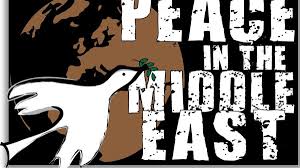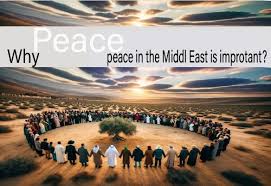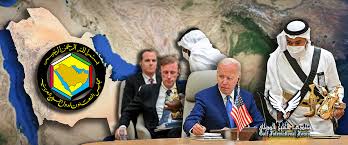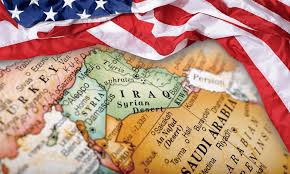Peace in the Middle East 2024: The Crucial Role of the United States
For decades, the Middle East has been a hotbed of conflict, with peace seemingly always just out of reach. But what if the key to unlocking lasting stability in this volatile region lies not within its borders, but across the ocean? The United States, with its unparalleled diplomatic clout and economic influence, holds a unique position in shaping the future of Middle Eastern peace.
From understanding the complex web of challenges to leveraging international partnerships, the US plays a multifaceted role in this high-stakes game of diplomacy. But with each presidential election cycle bringing potential shifts in foreign policy, can the pursuit of peace weather the storms of changing administrations? As we delve into the intricacies of US involvement in Middle East peace resolution, we’ll explore the diplomatic initiatives, economic incentives, and trust-building measures that could pave the way for a brighter future in this troubled region.

Understanding the US Role in Peace in the Middle East
- Military alliances and their impact on peace efforts
Understanding the US Role in Peace in the Middle East is essential, The United States has long-standing military alliances in the Middle East, which significantly influence peace efforts in the region. These alliances, primarily with Israel and several Arab states, create a complex web of relationships that both facilitate and complicate peace negotiations.
- Key US military allies in the Middle East:

- Israel
- Saudi Arabia
- Egypt
- Jordan
- United Arab Emirates
The impact of these alliances on peace efforts can be summarized in the following table:
| Positive Impact | Negative Impact |
| Leverage for negotiations | Perceived bias |
| Regional stability | Arms race concerns |
| Intelligence sharing | Proxy conflicts |
| Deterrence against aggression | Escalation of tensions |
Historical involvement of the US in the region
The United States has been deeply involved in Middle East affairs for decades, shaping the political landscape and influencing peace initiatives. This historical involvement has established the US as a key player in any potential peace resolution.
- Major US interventions in the Middle East:
- Suez Crisis (1956)
- Camp David Accords (1978)
- Gulf War (1990-1991)
- Oslo Accords (1993-1995)
- Iraq War (2003-2011)
- Current US diplomatic strategies: In recent years, the US has adopted a multifaceted approach to diplomacy in the Middle East, focusing on bilateral and multilateral negotiations, economic incentives, and regional cooperation.
- Key elements of current US diplomatic strategies:
- Promoting normalization between Israel and Arab states
- Supporting Palestinian economic development
- Engaging in multilateral forums
- Addressing Iran’s nuclear program
US economic influence in peace negotiations: The United States wields significant economic influence in the Middle East, which it leverages to support peace negotiations and incentivize cooperation among regional actors.
- US economic tools for peace:
- Foreign aid packages
- Trade agreements
- Investment initiatives
- Sanctions relief
This economic leverage allows the US to play a crucial role in shaping the conditions for peace and stability in the region. By offering economic incentives and threatening economic consequences, the US can influence the behaviour of key actors and create an environment more conducive to productive negotiations.
Key Challenges in Middle East Peace Process: The Middle East peace process faces several complex and interconnected challenges that have hindered progress for decades. Understanding these key obstacles is crucial for developing effective strategies to achieve lasting peace in the region.
- Israeli-Palestinian Conflict
The Israeli-Palestinian conflict remains at the core of Middle East tensions. This long-standing dispute involves:
- Territorial claims
- Security concerns
- Refugee rights
- Status of Jerusalem
| Issue | Israeli Perspective | Palestinian Perspective |
| Borders | Secure, defensible borders | 1967 lines with land swaps |
| Settlements | Strategic necessity | Obstacle to peace |
| Jerusalem | Unified capital | East Jerusalem as capital |
| Refugees | No right of return | Right of return |
Regional Power Dynamics
The Middle East is characterized by complex power dynamics involving multiple state actors:
- Iran’s regional ambitions
- Saudi Arabia-Iran rivalry
- Turkey’s influence
- Egypt’s role in Arab affairs
These power struggles often exacerbate existing conflicts and create new tensions.
- Religious and Cultural Tensions
Religious and cultural differences contribute significantly to regional conflicts:
- Sunni-Shia divide
- Arab-Persian tensions
- Jewish-Muslim-Christian rivalries
- Minority rights issues
Economic Disparities and Resource Conflicts
Economic factors play a crucial role in regional instability:
- Oil and gas resource disputes
- Water scarcity issues
- Wealth inequality within and between nations
- Youth unemployment and lack of opportunities
Terrorism and Extremist Groups
The presence of terrorist and extremist organizations poses a significant challenge to peace:
- ISIS and its affiliates
- Al-Qaeda and related groups
- State-sponsored terrorism
- Radicalization of youth
These groups exploit regional instability and often derail peace efforts. Addressing these multifaceted challenges requires a comprehensive approach that combines diplomatic, economic, and security measures. The next section will explore US-led diplomatic initiatives aimed at tackling these complex issues and fostering peace in the Middle East.
US-Led Diplomatic Initiatives
The United States has long been a key player in Middle East peace efforts, spearheading various diplomatic initiatives to foster stability and cooperation in the region. These initiatives have focused on several crucial areas:
- Two-state solution advocacy
The US has consistently championed the two-state solution as a cornerstone of Middle East peace. This approach envisions:
- An independent Palestinian state
- A secure Israeli state
- Peaceful coexistence between the two nations
|
Pros of Two-State Solution |
Challenges |
| Self-determination for both peoples | Border disputes |
| Potential for economic cooperation | Security concerns |
| Reduced tensions in the region | Status of Jerusalem |
- Mediation between conflicting parties
US diplomacy has often involved:
- Facilitating direct talks between Israeli and Palestinian leaders
- Providing a neutral ground for negotiations
- Offering expertise and resources to support dialogue
- Promotion of regional cooperation
The US has worked to encourage broader regional cooperation through:
- Economic partnerships
- Security collaborations
- Cultural exchanges
These efforts aim to create a network of relationships that can support and sustain peace efforts.
- Support for democratic reforms:US diplomatic initiatives have also included support for democratic reforms in the region, recognizing that stable, representative governments are crucial for long-term peace. This support has taken various forms:
- Election monitoring
- Governance assistance programs
- Civil society support
With these multifaceted diplomatic efforts, the US continues to play a pivotal role in shaping the landscape of Middle East peace negotiations. As we move forward, it’s important to consider how these initiatives can be complemented by economic incentives to further encourage peaceful resolutions.
Economic Incentives for Peace: As we explore the various aspects of the Middle East peace process, it’s crucial to understand the role of economic incentives in fostering stability and cooperation. The United States has long recognized the power of economic development in promoting peace and has implemented various strategies to support this goal.
Support for Cross-Border Economic Initiatives: Cross-border economic initiatives play a vital role in building relationships and interdependence between nations. These projects not only stimulate economic growth but also create opportunities for dialogue and collaboration. Some examples include:
- Joint industrial zones
- Shared water management projects
- Cross-border tourism initiatives
| Initiative Type | Benefits | Examples |
| Industrial Zones | Job creation, technology transfer | Qualifying Industrial Zones (QIZ) |
| Water Management | Resource sharing, environmental cooperation | Red Sea-Dead Sea Water Conveyance Project |
| Tourism | Cultural exchange, economic diversification | Abraham Path Initiative |
US Foreign Aid Programs
The United States has a long history of providing foreign aid to support peace and stability in the Middle East. These programs focus on:
- Economic development
- Humanitarian assistance
- Capacity building for governance
- Education and healthcare initiatives
Trade Agreements and Economic Partnerships
Trade agreements and economic partnerships are powerful tools for fostering regional cooperation and economic growth. The US has facilitated several key agreements, including:
- US-Israel Free Trade Agreement
- US-Jordan Free Trade Agreement
- Qualifying Industrial Zones (QIZ) program
These agreements not only boost trade but also create incentives for countries to maintain peaceful relations.
Investment in Infrastructure and Development Projects
Infrastructure development is crucial for long-term economic growth and stability. The US supports various projects through:
- Direct investment
- Public-private partnerships
- International financial institutions
Key areas of focus include:
- Transportation networks
- Energy infrastructure
- Telecommunications
- Water and sanitation systems
By investing in these critical areas, the US helps create the foundation for sustainable economic growth and improved living standards, which are essential for long-term peace and stability in the region. With these economic incentives in place, the next step is to address the security concerns that often hinder progress towards peace in the Middle East.
Middle East Precarious Situation
The Middle East stands on a knife’s edge, teetering between fragile peace and all-out conflict. From ancient rivalries to modern geopolitical tensions, the region’s complex tapestry of cultures, religions, and resources has long been a flashpoint for global attention. But what lies beneath the surface of this precarious situation?
Imagine a chessboard where every move ripples across continents, affecting oil prices, global security, and the lives of millions. That’s the Middle East today – a high-stakes game where superpowers vie for influence, economies hang in the balance, and age-old grudges simmer. As we delve into this intricate web of relationships and conflicts, we’ll uncover the historical roots that have shaped the region, explore the geopolitical interests that fuel ongoing tensions, examine the economic factors that contribute to instability, and finally, consider potential pathways to stability that could reshape the future of this volatile yet vital part of our world.
Historical Context of Middle East Tensions
Origins of regional conflicts
The Middle East has been a hotbed of conflicts for centuries, with roots tracing back to ancient civilizations. Several factors have contributed to the region’s ongoing tensions:
- Religious divisions
- Territorial disputes
- Ethnic diversity
- Resource competition
These long-standing issues have shaped the complex landscape of the Middle East, leading to numerous conflicts and power struggles throughout history.
Key events shaping current dynamics
Several pivotal events have significantly influenced the current state of affairs in the Middle East:
| Event | Year | Impact |
| Sykes-Picot Agreement | 1916 | Arbitrary borders drawn by colonial powers |
| Creation of Israel | 1948 | Palestinian displacement and Arab-Israeli conflicts |
| Iranian Revolution | 1979 | Shift in regional power dynamics |
| Gulf Wars | 1990-2003 | Destabilization of Iraq and regional power vacuum |
| Arab Spring | 2010-2012 | Political upheaval and civil unrest across the region |
These events have reshaped alliances, fueled ongoing conflicts, and continue to influence geopolitical strategies in the Middle East.
Impact of colonialism and post-colonial era
The legacy of colonialism has left an indelible mark on the Middle East, contributing to many of the challenges faced today:
- Artificial borders: Colonial powers drew arbitrary boundaries, disregarding ethnic and religious demographics.
- Political instability: The sudden departure of colonial powers left power vacuums and weak governance structures.
- Economic exploitation: Colonial-era resource extraction policies led to economic disparities and dependence.
- Cultural tensions: Western influence clashed with traditional values, creating societal rifts.
In the post-colonial era, many Middle Eastern countries struggled to establish stable governments and economies, often resulting in authoritarian regimes or failed states. This instability has provided fertile ground for extremist ideologies and continued external interference, further complicating the region’s path to stability.
Now that we have examined the historical context, let’s explore the current geopolitical interests and external influences shaping the Middle East.
Geopolitical Interests and External Influences: The Middle East’s precarious situation is significantly influenced by various global powers, each with its own agenda and strategic interests. Let’s examine the roles of key external players in shaping the region’s geopolitical landscape.
European Union’s diplomatic efforts: The European Union has long been involved in Middle Eastern affairs, primarily focusing on diplomatic initiatives and economic cooperation. Their approach includes:
- Promoting dialogue and negotiation between conflicting parties
- Supporting economic development through trade agreements and aid programs
- Advocating for human rights and democratic reforms
| EU Diplomatic Efforts | Impact on the Middle East |
| Peace process mediation | Facilitates negotiations between Israel and Palestine |
| Economic partnerships | Enhances regional stability through trade and investment |
| Humanitarian aid | Addresses urgent needs in conflict-affected areas |
China’s growing economic role
China’s influence in the Middle East has been steadily increasing, primarily through economic means:
- Massive infrastructure investments under the Belt and Road Initiative
- Expansion of trade relationships with key regional players
- Strategic partnerships in the energy and technology sectors
Russian strategic presence
Russia has re-established itself as a major player in Middle Eastern geopolitics, leveraging both military and diplomatic tools:
- Military intervention in Syria, supporting the Assad regime
- Arms sales to various regional powers
- Energy cooperation with oil-producing nations
- United States involvement
The United States remains a dominant force in Middle Eastern affairs, with a complex web of alliances and interests:
- Long-standing support for Israel
- Military presence and interventions in Iraq and Afghanistan
- Diplomatic efforts to contain Iran’s nuclear ambitions
- Strategic partnerships with Gulf states
Now that we’ve examined the roles of these major external influences, we can better understand how their competing interests contribute to the region’s instability and complicate efforts towards peace.
Economic Factors Fueling Instability; After examining the geopolitical landscape, let’s delve into the economic factors that contribute to the precarious situation in the Middle East.
- Oil and Natural Gas Resources: The Middle East’s vast oil and natural gas reserves have long been a source of both wealth and conflict. These resources play a crucial role in shaping the region’s economic and political landscape.
Distribution of Resources: The uneven distribution of oil and gas resources across Middle Eastern countries has led to significant disparities in wealth and power. Here’s a breakdown of the top oil-producing countries in the region:
| Country | Oil Production (barrels per day) |
| Saudi Arabia | 11.0 million |
| Iraq | 4.7 million |
| Iran | 3.8 million |
| UAE | 3.1 million |
| Kuwait | 2.7 million |
This concentration of resources in a few countries has created:
- Economic dependencies
- Political leverage
- Regional power imbalances
Resource Curse
The abundance of oil and gas has often led to a phenomenon known as the “resource curse” or “paradox of plenty.” This manifests in several ways:
- Over-reliance on resource exports
- Neglect of other economic sectors
- Vulnerability to price fluctuations
- Corruption and lack of transparency
- Uneven distribution of wealth within countries
These factors contribute to economic instability and social unrest, further complicating the region’s already tense political situation.As we move forward, we’ll explore how these economic factors intersect with social and political issues to create a complex web of challenges for Middle Eastern stability.
Potential Pathways to Stability
Now that we’ve examined the various factors contributing to instability in the Middle East, let’s explore potential solutions that could pave the way for a more stable future in the region.
- Addressing humanitarian crises:Addressing humanitarian crises is crucial for establishing stability in the Middle East. Here are key steps to tackle this issue:
- Providing emergency aid and resources to conflict-affected areas
- Implementing long-term strategies for refugee resettlement and integration
- Improving access to healthcare, education, and basic services in vulnerable communities
Economic development and diversification strategies
To reduce economic instability, countries in the Middle East should focus on:
- Diversifying their economies beyond oil and gas
- Investing in renewable energy sources
- Promoting entrepreneurship and small businesses
- Developing human capital through education and vocational training
| Strategy | Benefits |
| Economic diversification | Reduced dependence on volatile commodities |
| Renewable energy investment | Sustainable growth and job creation |
| Entrepreneurship promotion | Innovation and economic resilience |
| Human capital development | Skilled workforce and increased productivity |
Regional cooperation frameworks
Establishing regional cooperation frameworks can help foster stability by:
- Creating platforms for dialogue and conflict resolution
- Promoting economic integration and trade agreements
- Collaborating on shared challenges such as water scarcity and climate change
Diplomatic initiatives and peace processes:Diplomatic efforts are essential for achieving lasting peace in the Middle East.
Key initiatives include:
- Revitalizing existing peace processes, such as the Israeli-Palestinian negotiations
- Engaging in multilateral dialogues to address regional tensions
- Encouraging Track II diplomacy and people-to-people exchanges
- Supporting the role of international organizations in mediation efforts
By focusing on these potential pathways to stability, the Middle East can work towards overcoming its current challenges and building a more peaceful and prosperous future for its people.
The complex tapestry of the Middle East’s precarious situation is woven from historical tensions, geopolitical interests, and economic factors. Understanding these intertwined elements is crucial for grasping the full picture of the region’s instability and the challenges it faces.
Moving forward, the path to stability in the Middle East requires a multifaceted approach. This involves addressing historical grievances, reducing external interference, promoting economic development, and fostering dialogue between conflicting parties. By working towards these goals, there is hope for a more peaceful and prosperous future in this critical region of the world.
If you liked this article, please like and share it with your friends, and don’t forget to Share your personal experience/observations thoughts and valuable suggestions to share for the education /benefit of others. Do subscribe to remain onboard and get more great content!
US Election 2024: America’s Choice for President and New Begining